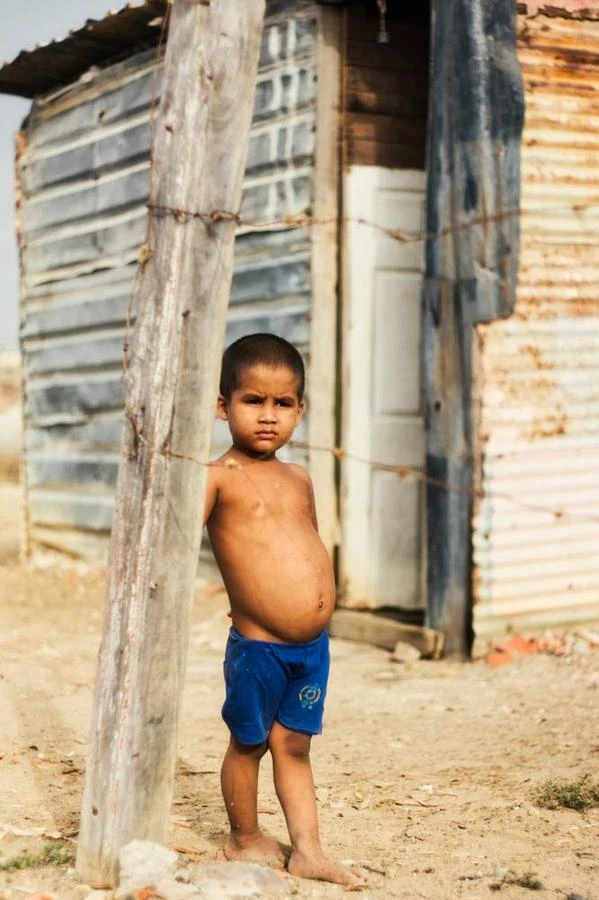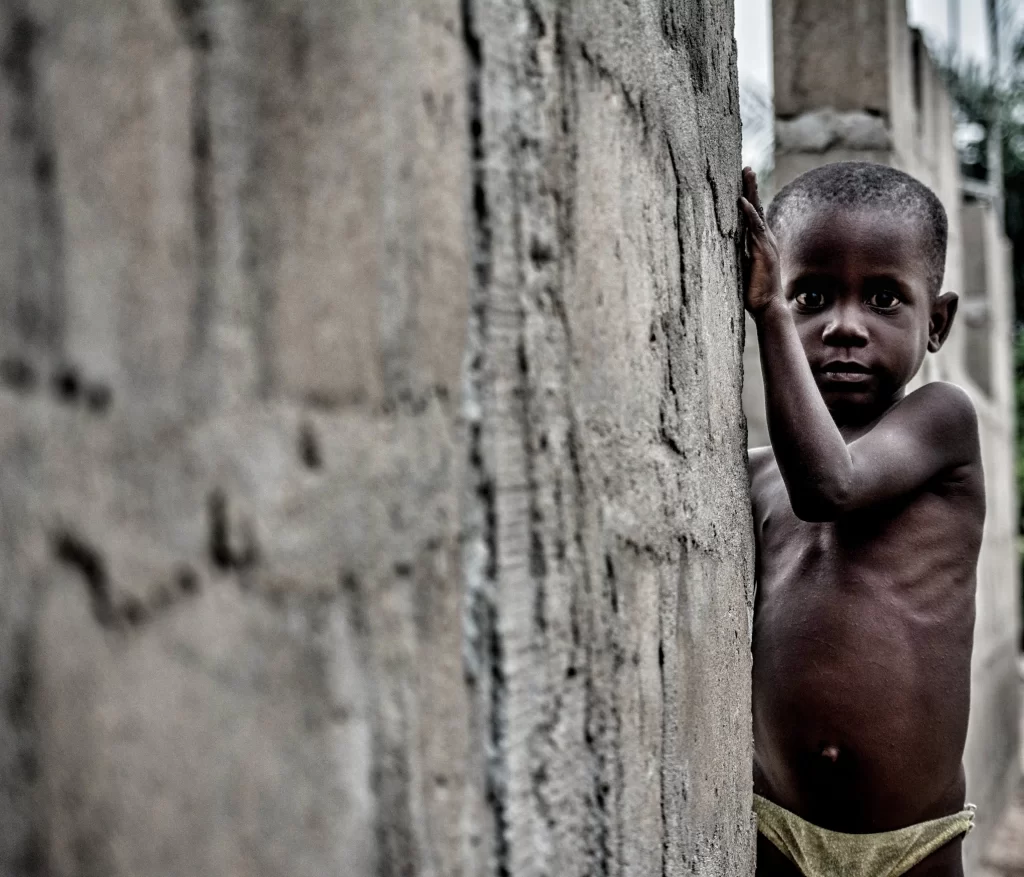Introduction
Kwashiorkor and marasmus are two forms of malnutrition that occur primarily in young children in developing countries. Kwashiorkor is often seen in areas where there is adequate caloric intake but a limited variety of foods, such as in some developing countries. While Marasmus is often seen in populations affected by poverty, famine, and war, where there is limited access to food in general. Both kwashiorkor and marasmus are preventable and treatable, and early intervention is key to improving a child’s prognosis.
Kwashiorkor
- Kwashiorkor is a form of severe malnutrition that primarily affects young children in developing countries. It is caused by a deficiency of protein in the diet and is typically accompanied by a lack of essential vitamins and minerals.
- Symptoms: The most noticeable symptom of kwashiorkor is edema, or the swelling of the extremities, which is caused by a buildup of fluid in the body due to a lack of protein. Other symptoms include thinning hair, a bloated abdomen, skin lesions, and muscle wasting. In severe cases, kwashiorkor can lead to stunted growth, anemia, and even death.
- Kwashiorkor is a preventable and treatable condition, and early intervention is key to improving a child’s prognosis. This often involves providing a diet that is rich in protein and other essential nutrients, as well as addressing any underlying medical conditions that may be contributing to malnutrition. In some cases, supplementation with vitamins and minerals may also be necessary.

Diagnosis
Kwashiorkor is diagnosed based on a combination of clinical and laboratory findings, as well as dietary information.
- The primary diagnostic criteria for kwashiorkor include edema, changes in hair color and texture, skin lesions, and a distended abdomen. A healthcare provider will also typically ask about the child’s diet and check for signs of anemia, muscle wasting, and stunted growth.
- Laboratory tests that may be performed to confirm a diagnosis of kwashiorkor include a complete blood count, serum protein levels, and liver function tests. These tests can help determine the extent of the protein and nutrient deficiency and identify any underlying medical conditions that may be contributing to the malnutrition.
Marasmus
- Marasmus is a form of severe malnutrition that results from a deficiency of both energy and protein in the diet. It primarily affects young children in developing countries and is a major contributor to childhood morbidity and mortality.
- Symptoms: The main symptoms of marasmus include severe weight loss, stunted growth, and muscle wasting. The child may also appear thin and frail, with loose and wrinkled skin, and have a diminished appetite. In severe cases, marasmus can lead to weakness, fatigue, anemia, and even death.
- Marasmus is caused by a diet that is lacking in both calories and protein and is often seen in populations affected by poverty, famine, and war. The condition is preventable and treatable, and early intervention is key to improving a child’s prognosis.

Diagnosis
- Marasmus is diagnosed based on a combination of clinical and laboratory findings, as well as dietary information.
- The primary diagnostic criteria for marasmus include severe weight loss, stunted growth, and muscle wasting. A healthcare provider will also typically ask about the child’s diet and check for signs of weakness, fatigue, anemia, and other symptoms of malnutrition.
- Laboratory tests that may be performed to confirm a diagnosis of marasmus include a complete blood count, serum protein levels, and liver function tests. These tests can help determine the extent of the energy and protein deficiency and identify any underlying medical conditions that may be contributing to malnutrition.
Difference Between Kwashiorkor And Marasmus
Kwashiorkor and marasmus are both forms of malnutrition, but they have some key differences.
- Kwashiorkor is caused by a deficiency of protein in the diet, whereas marasmus is caused by a deficiency of both energy (calories) and protein. Kwashiorkor is characterized by edema (swelling), changes in hair color and texture, skin lesions, and a distended abdomen, whereas marasmus is characterized by severe weight loss, stunted growth, and muscle wasting.
- Another important difference between the two conditions is their prevalence. Kwashiorkor is more commonly seen in areas where there is adequate caloric intake but a limited variety of foods, such as in some developing countries, whereas marasmus is seen in populations affected by poverty, famine, and war, where there is limited access to food in general.
- Treatment for both conditions involves providing a diet that is rich in energy and protein, as well as addressing any underlying medical conditions that may be contributing to malnutrition.
Treatment
- The treatment of Kwashiorkor And Marasmus involves addressing the underlying cause of malnutrition by providing a diet that is rich in protein and other essential nutrients. This often involves incorporating more protein-rich foods, such as meat, dairy products, eggs, and legumes, into the child’s diet. In some cases, supplementation with vitamins and minerals may also be necessary to support recovery.
- In severe cases of Kwashiorkor And Marasmus, hospitalization may be required to provide supportive care, including fluid and electrolyte replacement, and to monitor the child’s progress. With proper treatment, most children with kwashiorkor can recover fully, although some may experience long-term health consequences if the malnutrition is not treated early and effectively.
Conclusion
Malnutrition, kwashiorkor, and marasmus, primarily affect young children in impoverished nations. Both kwashiorkor and marasmus are preventable and treatable, and early intervention is key to improving a child’s prognosis. It is caused by a deficiency of protein in the diet and is typically accompanied by a lack of essential vitamins and minerals.
Frequently Asked Questions
1. What disease is a deficiency of protein?
A deficiency of protein in the diet can lead to a type of malnutrition known as protein-energy malnutrition (PEM). PEM can present as two forms of malnutrition, kwashiorkor, and marasmus, which have different symptoms and impacts on the body.
2. Why does Kwashiorkor cause a swollen belly?
Kwashiorkor is a form of malnutrition that results from a lack of protein in the diet. The swelling is caused by the accumulation of fluid in the tissues, a condition known as edema. Edema occurs because of an imbalance between the amount of protein in the body and the amount of fluid in the tissues.
3. At what age marasmus occurs?
Marasmus typically occurs in children under the age of 5, particularly during the first two years of life when they are most vulnerable to malnutrition. Marasmus is a form of protein-energy malnutrition (PEM) that results from a lack of both protein and energy in the diet.
 Mission Statement
Mission Statement
“Empower every student to achieve full potential”
88Guru has been established with the social objective of making quality video-based learning material available to all Indian students. Technology, Connectivity and Social Media are rapidly changing the world of Education and we wish to lead the transformation of the tuition industry in India.
88Guru is the perfect complement to the current tuition model. 88Guru creates a wonderful opportunity for children and parents to bond while engaging in a valuable learning activity. It also provides the complete curriculum at your fingertips for those moments when you need some help at short notice. We believe that this mode of tuition could be transformational, adding hours to a child's day while providing complete control over the learning process.
Every course is taught by the best teachers from India's top schools and conducted in an engaging manner to keep students involved. The e-learning process consists of video-based instructions, computer-graded assignments, and a dashboard which allows the student and parent to track progress.



